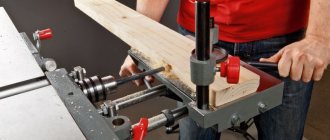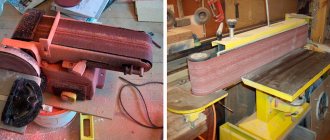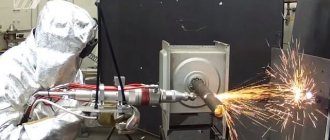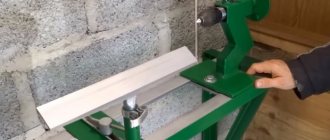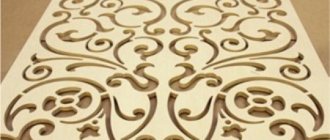Classification of lathes
Many people decide to buy and install lathes in their own workshop because of their possible use in the manufacture of cylindrical products. There are quite a large number of different models; they can be divided into several groups:
- Classic equipment, when the workpiece is located in a chuck or faceplate. A cutter is used as a cutting tool. The workpiece can rotate at different speeds. However, the equipment is not suitable for mass production.
- Copying machines can be used to work from a template. By using a template, you can simplify the task of manufacturing similar products. For small-scale production, a manually operated machine is suitable, as it is low cost and easy to use.
- Milling machines are extremely common today. This is due to the fact that they are widely used in the production of cabinet and flat parts made of wood and metal. There is also a wood turning and milling machine, which can be used to perform various operations.
- Models with numerical control. In mass production or the manufacture of expensive products, equipment that has a CNC unit can be used. However, the use of a copier significantly reduces the cost of the product.
The copying device for a wood lathe has very attractive characteristics, due to which they began to be installed in private and other workshops.
Capabilities of copy-milling equipment
The copying machine, which belongs to the milling group, is designed for copying and milling work with flat and three-dimensional parts. In addition, such a device can be used to engrave shaped profiles, apply inscriptions and patterns (even of high complexity) to products, and carry out light milling operations on wood and other materials.
An example of the result of a copy-milling machine
Using tools with cutting parts made of various materials, parts made of cast iron, different types of steel and non-ferrous metals are processed on copy milling machines. Such devices for producing parts in small and large batches successfully produce blades for turbojet engines and steam turbines, propellers for ships, cutting and forging dies, impellers for hydraulic turbines, molds for pressing and casting, molds, etc.
A copy-milling machine performs technological operations that are practically inaccessible to universal equipment. The operating principle of such a machine is based on the copying method, for which a special template is used. The use of a template eliminates the human factor when processing even the most complex parts, due to which all finished products have the same shape and geometric dimensions. Conveniently, one template can be used to accurately manufacture a large batch of parts that will be completely identical to each other.
In order to copy the shape and dimensions of the template as accurately as possible, a copier (pantograph for a router) is installed on a copy-milling machine. The purpose of such a device is to accurately transfer all movements from the copy head to the cutting tool.
Classic design
Industrial machines have a rather complex design, especially CNC versions, which can carry out processing automatically. The required product can also be obtained using copying equipment. The classic design is represented by a combination of the following main components:
- The bed acts as a base and connecting element. The structure is made using metal, the individual elements are connected by welding. The bed can have different heights. Each craftsman chooses his own height when making a homemade structure.
- The headstock and tailstock are also an integral part of the machine. The headstock is used to house the gearbox and drive, as well as the electric motor. The tailstock is used to fix the workpiece, which makes it possible to produce longer products.
- The main rotation is received by the workpiece. It is transmitted from an electric motor through a drive.
- The tool rest also allows for high-quality processing. It is worth securing the cutting area to eliminate the possibility of injury to your hands or contact with a foreign element.
- Leading and driven centers used to secure the workpiece.
A homemade copier for a wood lathe also allows for high-quality processing of workpieces.
DIY making
Industrial versions of machines are expensive. That is why many are considering the possibility of assembling the machine with their own hands. Recommendations for carrying out the work are as follows:
- First, you should develop or download a drawing according to which the assembly will be carried out. As a rule, a drawing of a conventional lathe is taken, which is modified to accommodate the installation of a copier.
- Work begins with the creation of the bed. This will require corners, as well as sheets of metal. The connection of individual elements is carried out using a welding machine. It is worth considering that screw connections are characterized by less rigidity. The bed must be strong and resistant to vibration.
- The main component is the electric motor. In order to increase the functionality of the equipment, an electric motor with a power of 200-250 W at 1500 rpm is installed. If you plan to process large workpieces, then a more powerful motor is installed. The motor should be protected from environmental influences.
- To fix the workpiece, a faceplate is attached to the output shaft. It has several sharp elements that it hits. Due to the sharp elements, rotation is transmitted, but fixation is carried out due to the tailstock with centers.
Most attention is paid to the production of the copier. This is what distinguishes a lathe from a copying machine.
Creating a copier
The copier is used to produce similar products. Due to its use, the productivity indicator is significantly increased. Among the features associated with creating a copier, the following points are noted:
- The basis for this unit is an unnecessary manual router.
- To position the copier, a platform measuring 20 by 50 cm is used. To secure the device, holes are created and bars are installed.
- To ensure processing along the entire length of the workpiece, the platform must move along the entire bed.
- The bars are fastened using self-tapping screws. They provide reliable fastening of the device.
- When performing work, you should use a level, since even a slight deviation from the horizontal position will lead to significant errors.
- The lathe places the block in a horizontal position. This is where the template will be attached. The timber is also fastened using self-tapping screws.
- The design is created in such a way that, if necessary, you can remove the copier and use the machine as regular lathe equipment.
The template is made of plywood and is screwed to the front surface of the beam. The upper surface of the previously installed beam is aligned with the axis of the template.
Disadvantages of the device in question
A homemade copying machine has a fairly large number of significant disadvantages. An example is the following information:
- Two hands are required to move the surface with the milling mechanism. This is due to the fact that the moving element is poorly fixed; you have to move it with both hands. If errors are made during the production of the structure, the moving element may warp and jam.
- To increase the processing accuracy, a screw gear is installed.
- The copier is suitable for making extremely simple products. An example is that it will be impossible to repeat twisted patterns on posts when using such a machine.
- You can increase the versatility of the device by replacing the circular cutter.
That is why it is recommended to install industrial machines to establish the production of complex wooden elements.
Making a machine with your own hands
There are a huge number of copy-type woodworking machines, which are known as pantographs, and have a CNC system (a universal option that allows processing using a copier or program). However, not everyone can purchase such equipment, which is associated with its very high cost. The addition of CNC makes the equipment available only to large manufacturers, when the payback period for the equipment will be less than 5 years. That is why many people ask the question - how to make a machine with your own hands?
Before you start work, it is worth remembering that do-it-yourself machines are significantly inferior to industrial models. At the same time, it is impossible to make a CNC version yourself. Also, many note that converting a regular milling version into a copying version with your own hands is also very difficult, and, often, it is easier to start from scratch. It is not difficult to make a pantograph yourself, but there are still certain difficulties in this process.
Homemade pantograph for a router
There are many schemes by which you can create a copy-milling machine with your own hands. A typical version usually consists of the following elements:
- Desktop;
- supporting frame;
- milling head.
To carry out the procedure for changing the cutting mode, the height of the table changes; the head with the cutter has an electric drive, which sets the cutting tool in motion; often the system includes a transmission mechanism for changing speeds.
The pantograph itself can be made as follows:
- Made of wood. You can create such a pantograph with your own hands, but it will have low processing accuracy, since the wooden parts are connected using a loop. Fastening with loops is characterized by backlash.
- Drawing pantograph made of metal - allows you to create copies at various scales, but cannot be used to create three-dimensional copies.
When creating a machine with your own hands, you should take into account that many parts may have flaws and discrepancies in size. This situation is associated with vibration and trembling of the base, which is quite difficult to avoid. When changing the direction of movement of the cutter, errors are also possible. Due to the internal stress of the wood workpiece, the workpiece may become distorted. Therefore, it is recommended to create such equipment only for narrow-profile production, when the machine will be designed to create one part. It is almost impossible to avoid the problems under consideration, however, provided that the same part is processed, gradual improvement of the design is possible.
Wood cutting machine Proma DSL-1200
The model in question is intended for processing wooden products that can be used as decorative elements. Experts call a distinctive feature of the design the presence of two incisors:
- The first is designed for processing cylindrical workpieces; more than 10 mm can be removed in one pass. Using the first cutter, you can get a round workpiece, just like on a conventional lathe.
- The second cutter is designed for copier work. It is this that allows you to produce various products using a copier.
This machine model can be used to work with large workpieces. To do this, the structure is equipped with a steady rest, which is mounted on rods that act as guides. The installed faceplate allows processing multi-faceted products.
Main characteristics of the model:
- The installed electric motor operates from a three-phase network with a voltage of 380 V. That is why the machine is not purchased for installation in a private workshop.
- The maximum length of the workpiece is 1200 mm.
- The layout is represented by a combination of two columns, between which the workpiece is placed. Note that the machine has a compact size, due to which it does not take up much space in the workshop.
The disadvantage of this proposal, like many others, is the rather high cost.
Types of copy-milling machines
The equipment of a copy-milling machine may include various types of drives. Based on this parameter, the following are distinguished:
- equipment with a pantograph (suitable for processing parts in 2–3 dimensions);
- devices with a copier mounted on a rotary rack moving in a vertical plane;
- single- and multi-spindle machines equipped with round or rectangular rotary tables;
- machines, the feed on which is ensured by mechanical, electrical, hydraulic devices;
- photocopying equipment.
A homemade copying machine can be any of these types (including copying and grinding machines). You just need to find drawings on the Internet and select components.
An example of a homemade copy-milling machine
According to the degree of automation and the method of fixing the workpiece, the following categories of copy-milling machines are distinguished:
- manual or desktop, on which the workpiece is fixed mechanically (on these devices you can drill holes of various shapes in accordance with the template);
- automatic equipment of a stationary type, the workpieces on which are fixed using pneumatic clamps (such machines work with aluminum);
- automatic equipment of a stationary type with pneumatic clamps, on which a three-spindle head is installed (on these copy-milling machines, triple holes are simultaneously drilled, which does not allow the production of units of the two previous types).
Copy model CL-1201
To produce wood products, a machine model CL-1201 or CL-1500b can be used. The first version has very attractive performance characteristics:
- The spindle used can change the direction of rotation. Due to this, the scope of application of the model is significantly expanded. Changing the direction of rotation of the spindle is carried out with a special handle.
- The machine allows you to select the spindle rotation speed with high precision. Due to this, it is possible to provide the most favorable conditions for turning wood based on the weight, dimensions and type of wood.
- There is a remote control to set basic parameters. The design can be installed on the headstock or tailstock, depending on the preference of the master. The remote control is represented by a combination of several keys.
- Cast iron is used in the manufacture of the column. In addition, the frame is manufactured using high-quality steel. By combining these materials, the degree of vibration of the structure during operation is reduced.
- The basic delivery includes a copier, which can be used for processing. Due to this, costs are reduced and the machine becomes more functional in use.
- The design of the machine has a milling attachment, which can be used to produce longitudinal grooves.
- The tailstock is used for more precise fixation of the workpiece. Its position may also change. The supply includes centers, which are selected depending on the characteristics of the workpiece.
- The support is characterized by high mobility. The cutting depth of the tool can be adjusted using a lever.
In addition, the manufacturer paid quite a lot of attention to the degree of protection of the machine from environmental influences. For example, the engine has a protection system against overheating or overload, all electronic parts are also protected from moisture and dust.
The only but significant drawback is the high cost of the proposal. A homemade design will cost several times less.
